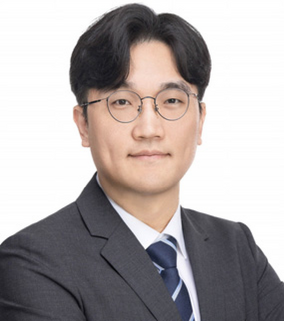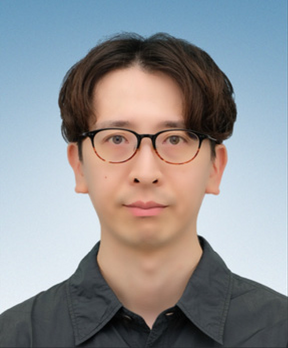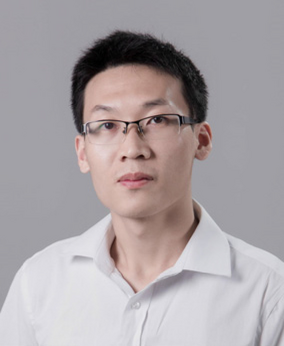5 2024 AAPPS-APCTP C. N. Yang Award by Rajdeep Singh Rawat
The 2024 AAPPS-APCTP C. N. Yang Awards were awarded to three outstanding and prospective young scholars, Gil-Ho Lee (Pohang University of Science and Technology), Kyohei MUKAIDA (Institute of Particle and Nuclear Studies, KEK) and Yong-Chun LIU (Tsinghua University). A total of 39 nominations were received from 9 different regions with representations in 9 different sessions of Asia Pacific Physics Conference (APPC-15) (refer to Table 3). Out of a total of 39 nominations, 21 nominations were from AAPPS member societies and AAPPS divisions while the remaining 12 were individual nominations. Compared to the year 2023, the year 2024 saw a good increase in overall nomination numbers from 26 to 39. Like previous years, all nominations, being highly selective from AAPPS member societies, AAPPS divisions and from high-profile eligible experts were of excellent quality making the selection process difficult and highly challenging.
Table 3 The regions and the sessions of the 2024 CN Yang Award nominees
| Nationality | No. of candidates |
|---|---|
| Japan | 16 |
| Beijing | 10 |
| India | 3 |
| Korea | 3 |
| Taipei | 3 |
| Hong Kong | 1 |
| Nepal | 1 |
| The Philippines | 1 |
| Uzbekistan | 1 |
| Total | 39 |
| Sessions (in APPC15-2022) | No. of candidates |
|---|---|
| E. Condensed Matter Physics | 11 |
| B. Astrophysics, Cosmology, and Gravitation | 6 |
| G. Nuclear Physics | 6 |
| I. Particles and Fields | 6 |
| A. Applied Physics | 3 |
| K. Plasma Physics | 2 |
| L. Quantum Information | 2 |
| N. Statistical Physics | 2 |
| H. Optics and Quantum Electronics | 1 |
| Total | 39 |
The C. N. Yang Award was established to honor and encourage young researchers with prominent research achievements and to promote the next generation’s leading scholars in physics in the Asia Pacific region. This award was presented during the Asia Pacific Physics Conference (APPC), which has been held approximately every three years. Notably, starting in 2019, the Association of Asia Pacific Physical Societies (AAPPS) and the Asia Pacific Center for Theoretical Physics (APCTP) jointly established the AAPPS-APCTP Chen-Ning Yang Award (C. N. Yang Award) to make it an annual event. The C. N. Yang Award Committee consists of members from the AAPPS Council, AAPPS Divisions, and renowned scholars recommended by APCTP. For 2024, the awards were presented at a special Award Ceremony held at Lahan Hotel Pohang, Korea on Wednesday, 6 November 2024.
The C. N. Yang Award selection process is a multi-step, highly vigorous, and challenging process, requiring a careful and detailed evaluation at each step. The originality of the candidates’ works, novelty and impact of the research, and their likely prospects were some of the important areas of consideration. The citations and the briefings for the C. N. Yang 2024 awardees are listed below.
5.1 Gil-Ho Lee, Pohang University of Science and Technology

“For his contributions in quantum nano-device physics and applications”
Dr. Gil-Ho Lee completed his B.S. in Chemistry and Physics from the Pohang University of Science and Technology (POSTECH), Republic of Korea, in 2007. He later pursued his Ph.D. in Physics at POSTECH, completing his doctoral degree in 2014. After completing his Ph.D., Dr. Lee engaged in postdoctoral research in 2014 at POSTECH, followed by a postdoctoral position at Harvard University from 2014 to 2017. In 2017, he returned to POSTECH as an Assistant Professor in the Department of Physics and was promoted to Associate Professor in 2021, a position he holds to this day. He has won several awards including Fulbright Visiting Scholar Fellowship (Fulbright Korea & the Department of State, USA, 2023), Young Scientist Award (Ministry of Science and ICT of Korea, 2022), and 2023 National R&D Excellence 100 (Ministry of Science and ICT of Korea), to name a few. Dr. Lee’s research primarily focuses on quantum transport phenomena, topological materials, and the integration of quantum nanodevices. His work explores macroscopic quantum effects in superconducting/graphene hybrid nanodevices, the development of single-photon detection technologies, and the study of topological superconductivity. He has made significant strides in understanding non-equilibrium quantum states, higher-order topological insulators, and relativistic electronic optics in graphene.
Dr. Lee successfully demonstrated the formation of a steady Floquet-Andreev state in a graphene Josephson junction. This groundbreaking discovery allows for deeper investigation of non-equilibrium quantum states, an area of growing interest in condensed matter physics [Nature 2022]. Another significant contribution of Dr Lee is in the field of microwave detection technology by developing a microwave bolometer with theoretical sensitivity limits. Using the unique properties of graphene’s linear band structure, he created a sensor that can detect microwave photons with unprecedented sensitivity with important implications for fields such as quantum computing, cosmic microwave background radiation research, and dark matter detection [Nature 2020]. Dr. Lee also provided the first experimental evidence showing that WTe2, a two-dimensional transition metal dichalcogenide, exhibits higher-order topological insulating properties. His work revealed the existence of a one-dimensional hinge state, a key feature of higher-order topological insulators, by spatially visualizing the current flow through a Josephson junction using an innovative interference measurement technique. This work opens up new avenues for exploring topological superconductivity and the elusive Majorana fermions [Nature Materials 2020].
5.2 Kyohei Mukaida, Institute of Particle and Nuclear Studies, KEK

“For his pioneering contributions in advancing our understanding of elementary particles under the extreme conditions of the early universe”
Dr. Kyohei Mukaida earned his Bachelor of Science in Physics from the University of Tokyo in 2010. He continued at the University of Tokyo for his Master of Science in Physics (2012) and his Doctor of Philosophy (Ph.D.) in Physics (2015). After completing his Ph.D., Dr. Mukaida embarked on several prestigious postdoctoral fellowships. From 2015 to 2017, he was a JSPS Postdoctoral Fellow at the Kavli Institute for the Physics and Mathematics of the Universe (KIPMU). He then moved to Deutsches Elektronen-Synchrotron (DESY) in Germany, where he worked as a postdoc from 2017 to 2020. From 2020 to 2021, Dr. Mukaida held a postdoctoral fellowship at CERN, working in the Theoretical Physics Department. Currently, he is an Assistant Professor at the Theory Center, Institute of Particle and Nuclear Studies (IPNS), KEK. He received the Young Scientist Award in Theoretical Particle Physics (Particle Physics Medal) in 2017 and again in 2022 for his outstanding contributions to particle physics under extreme early-universe conditions. Dr. Mukaida's research bridges particle physics and cosmology, particularly focusing on the behavior of elementary particles in the early universe. His work spans topics such as inflation, dark matter, baryo/leptogenesis, and primordial black holes. He is particularly interested in the process of reheating following inflation, which involves the transition of the universe from inflationary expansion to the radiation-dominated phase, and how this impacts particle physics and the generation of matter.
Dr. Mukaida has significantly contributed to the study of Higgs inflation, a model driven by the Standard Model Higgs boson. His work revealed that reheating after Higgs inflation can be extremely violent, leading to the production of longitudinal Standard Model gauge bosons with sub-Planckian momentum. This discovery has raised critical questions about the theoretical consistency of Higgs inflation models, influencing the global research direction towards exploring nonminimal gravity to resolve these challenges [JCAP 2017]. In the context of reheating after inflation, he made an important contribution by identifying the bottleneck of thermalization in many inflation models [JHEP 2014], which impacts baryogenesis, leptogenesis, and dark matter production.
Dr. Mukaida has extensively explored various dark matter (DM) production mechanisms. He collaborated with experts in quark-gluon plasma physics to show that the freeze-out of DM in the primordial plasma shares the same underlying physics as quarkonium in QGP, leading to significant corrections in the DM density calculations [JHEP 2022].
5.3 Yong-Chun Liu, Tsinghua University

“For his outstanding contributions in quantum control of macroscopic systems and its applications in precision measurement”
Dr. Yong-Chun Liu is a Tenured Associate Professor at the Department of Physics, Tsinghua University, China. He obtained the B.S. degree from School of Science, Beijing Jiaotong University, in 2010 and obtained the Ph.D. degree from School of Physics, Peking University, in 2015. After that, he worked as an Associate Research Fellow at China Academy of Space Technology. In 2017, he joined the Department of Physics, Tsinghua University, and worked successively as a Tenure-Track Assistant Professor (2017–2018), Tenure-Track Associate Professor (2019–2023), and Tenured Associate Professor (2024–now). His research focuses on quantum optics and quantum precision measurement. He proposed dynamic control methods to efficiently prepare various macroscopic quantum states and proposed new methods for the improvement of magnetic field measurement sensitivity. He has published more than 90 papers (including 12 first/corresponding-author papers in Physical Review Letters), which are cited over 4000 times, with a H-index of 37. He served as the chief scientist of a National Key Research and Development Program Youth Project. He was selected as a young Changjiang Scholar of the Ministry of Education of China and won Rao Yutai fundamental optics award and Wang Daheng optics award of Chinese Optical Society.
Dr. Yong-Chun Liu’s primary research contributions lie in the areas of quantum state preparation, quantum device development, and precision measurements, focusing on the manipulation of macroscopic quantum systems. He developed dynamic control methods to efficiently prepare macroscopic quantum states, including large-atom-number Schrödinger cat states and squeezed states. His innovative control techniques transformed one-axis twisting interactions into two-axis twisting interactions, which are more difficult to achieve in physical systems, thus breaking existing squeezing limitations and improving quantum measurement precision (PRL 2011). For the development of quantum devices, he achieved significant breakthroughs in creating nonreciprocal photonic devices, enhancing isolation ratio and bandwidth while reducing insertion loss. His research includes using atomic collisions to control nonreciprocal light transmission with high isolation ratios and broad bandwidth (PRL 2020). Dr. Liu’s contributions to precision magnetic field measurements have improved sensitivity by orders of magnitude. His work on enhancing dissipation control in atomic ensembles provided a new experimental upper limit for the spin-dependent fifth force, a parameter of interest in physics beyond the Standard Model (PRL 2023). These efforts push the boundaries of quantum technology and precise measurement, providing fundamental advancements for both theoretical and applied quantum science.
References
-
J.J. Hopfield, Neural networks and physical systems with emergent collective computational abilities. Proc. Natl. Acad. Sci. 79(8), 2554–58 (1982)
-
J.J. Hopfield, Neuronswith graded response have collective computational properties like those of two-state neurons. Proc. Natl. Acad. Sci. 81(10), 3088–92 (1984)
-
J.J. Hopfield, Artificial neural networks. IEEE Circuits Devices Mag. 4(5), 3–10 (1988)
-
G.E. Hinton, Computation by neural networks. Nat. Neurosci. 3(11), 1170 (2000)
-
J.J. Hopfield, Pattern recognition computation using action potential timing for stimulus representation. Nature 376(6535), 33–36 (1995)
-
Y. LeCun, Y. Bengio, G.E. Hinton, Deep learning. Nature 521(7553), 436–44 (2015)
-
A. Krizhevsky, I. Sutskever, G.E. Hinton, ImageNet classification with deep convolutional neural networks. Commun. ACM 60(6), 84–90 (2017)
-
D.E. Rumelhart, G.E. Hinton, R.J. Williams, Learning representations by back-propagating errors. Nature 323(6088), 533–36 (1986)
-
Editorial, 72% of SPM graduates prefer being influencers, E-Hailing drivers,” theSun, Aug 3, 2022. https://thesun.my/style-life/going-viral/72-of-spm-graduates-prefer-being-influencers-e-hailing-drivers-KX9536950. Accessed 24 Oct 2024.
-
R. Loheswar, Experts call for early-years STEM education to address critical engineering labour shortage in Malaysia. MalayMail, May 22, 2024. https://www.malaymail.com/news/malaysia/2024/05/22/experts-call-for-early-years-stem-education-to-address-critical-engineering-labour-shortage-in-malaysia/134795. Accessed 24 Oct 2024
-
R.P. Feynman, The Pleasure of Finding Things Out: The Best Short Works of Richard P. Feynman (Perseus Books, 1999)
-
Todd Siler, Breaking the Mind Barrier: The Artscience of Neurocosmology (Simon & Schuster, 1997)
-
R.S. Root-Bernstein, T. Siler, A. Brown, K. Snelson, ArtScience: integrative collaboration to create a sustainable future. LEONARDO 44(3), 192 (2011)
-
A. S. Eddington, Space, Time and Gravitation: An Outline of the General Relativity Theory (Cambridge University Press, 1920)
-
M. Kumar, Quantum: Einstein, Bohr, and the Great Debate About the Nature of Reality (W.W. Norton & Company, 2011)
-
Malaysia Education Blueprint 2013-2025, Prime Minister's Office of Malaysia. https://www.pmo.gov.my/wp-content/uploads/2019/07/Malaysia-Education-Blueprint-2013-2025.pdf
-
A. Osman, L. Halim, N.M. Arsad, Fundsof knowledge of the Semai Orang Asli children in science learning: a needs analysis. Int. J. Educ. 15(2), 48–65 (2023)
-
N. Z. Che Ghani, Implementation of Forest STEM Module based on Moral Values in Indigenous Education (Master’s thesis, Universiti Teknologi Malaysia, 2021)
Author information
Authors and Affiliations
Consortia
Contributions
Authors read and approved the final manuscript.
Ethics declarations
Competing interests
The authors declare that they have no competing interests.
Additional information
Publisher’s Note
Springer Nature remains neutral with regard to jurisdictional claims in published maps and institutional affiliations.

